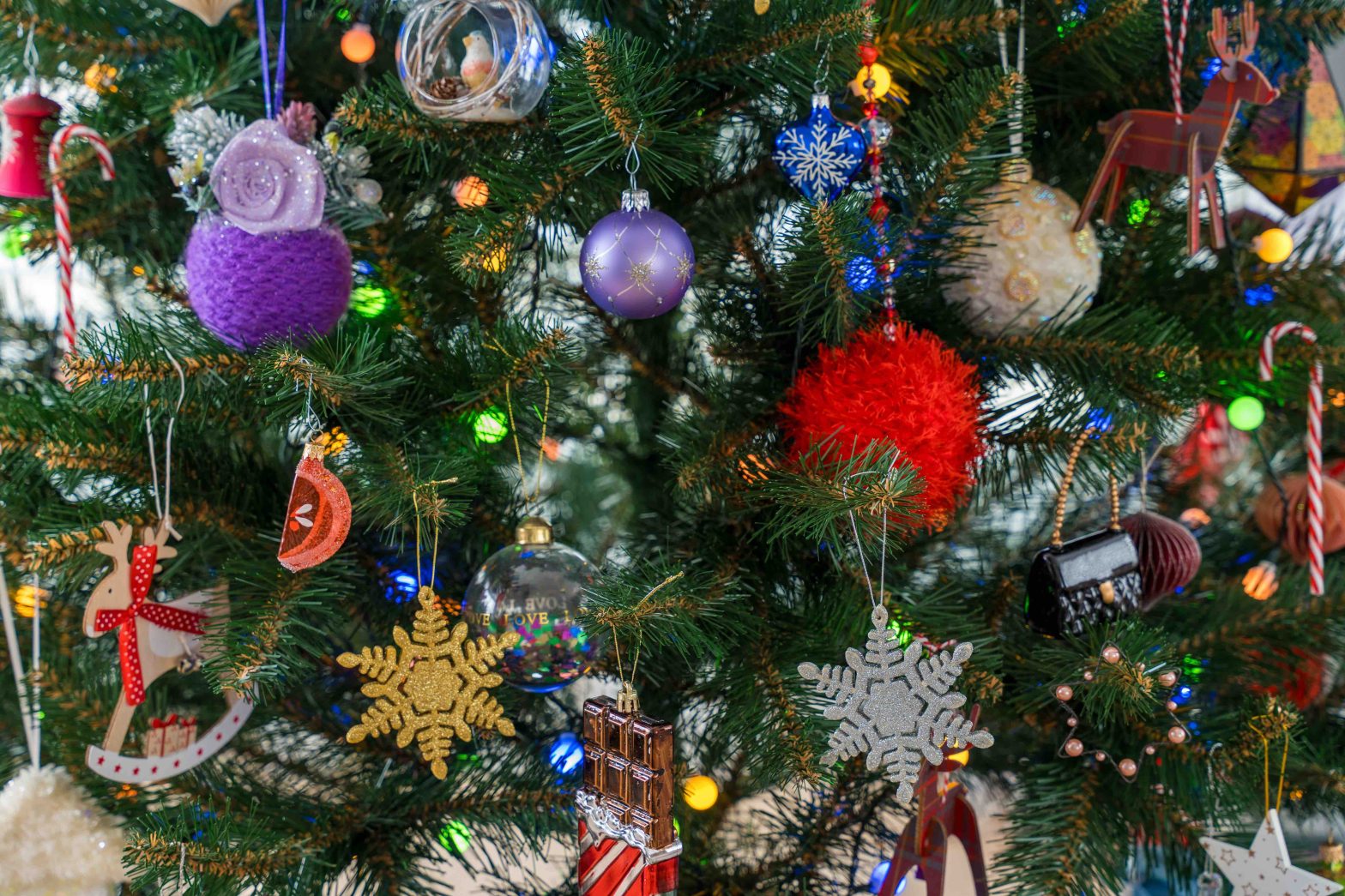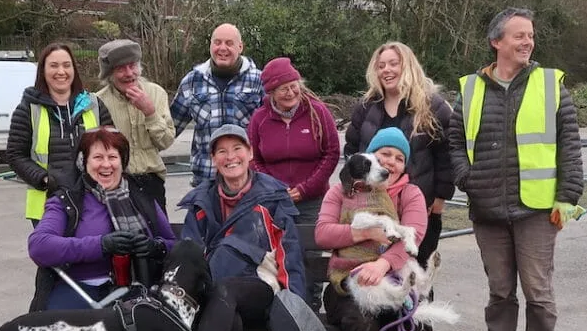How to Choose a Sustainable Christmas Tree: Real vs Fake

As you’re gearing up for the festive season, the question of which Christmas tree to bring home might come up. Should you go for a real one, freshly cut or potted? Or dust off the artificial tree from the loft?
There is no one-size-fits-all answer. What matters most is how you choose, use and eventually dispose of your tree. With a bit of thought, your choice can help reduce waste and support more sustainable habits.
The Impact of Christmas Tree Waste
Millions of Christmas trees are bought each year in the UK, and what happens to them afterwards has a lasting impact. Trees that end up in landfill release harmful greenhouse gases. Artificial trees made from plastic and metal often cannot be recycled. But there are better options.
Choosing a tree with its full life cycle in mind, including how it was grown, how long it will last, and how it will be disposed of, can help reduce waste and support more sustainable practices. Choosing well means fewer emissions, less waste in landfill and better outcomes for nature.
Real vs Artificial Christmas Trees
Whether you are drawn to the scent of pine or prefer the convenience of unfolding branches from a box, the sustainability of your tree depends on more than just what it is made of. The journey from production to disposal matters. Here is how real and artificial Christmas trees compare when it comes to environmental impact.
Real Christmas trees
- Grown on dedicated farms, usually over 7 to 12 years, where they absorb carbon and may support biodiversity.
- Can be low-impact if recycled properly through mulching, composting or community chipping schemes.
- A tree that ends up in landfill, however, can release methane and raise its carbon footprint significantly.
- Sourcing locally and choosing trees certified by FSC or Grown in Britain helps ensure responsible practices.
- Many growers replant after harvest and manage land for wildlife, adding to their environmental value.
Artificial Christmas trees
- Typically made from PVC and metal, with high emissions from production and overseas transport.
- A two metre artificial tree has a carbon footprint of around 40 kg CO2e, much higher than a real tree.
- To balance its impact, it needs to be reused for at least 10 years, ideally longer.
- Difficult to recycle due to mixed materials and often ends up in landfill.
- Can be more sustainable if you already own one and are committed to long term use.
How to Choose a Christmas Tree
If you are considering a real Christmas tree, look for one grown locally to reduce transport emissions. Choose a supplier that explains how their trees are grown and managed. Certification such as FSC or Grown in Britain is a good sign of sustainability. Some communities also offer potted tree rental schemes, where a tree is returned after Christmas and replanted for the next season.
If you are using an artificial Christmas tree, make sure it is built to last and commit to reusing it for as long as possible to create less plastic waste. Avoid buying a new one each year, and if you no longer want your current tree, try to pass it on rather than binning it.
And if neither option works for you, consider alternatives. You could decorate a houseplant, create a reusable tree from repurposed wood or lights, or skip the tree altogether in favour of a festive centrepiece made from natural materials.
Local Christmas Tree Initiatives
- Many UK councils run Christmas tree collection and recycling schemes each January. Trees get chipped for mulch or compost.
- Rental schemes for live trees are offered by some community organisations, allowing you to return and reuse the tree each year.
- Local tree farm open days help households understand growing practices and support their local economy.
Remember These Three Things
Choosing a sustainable Christmas tree for your household is a small but meaningful act. Whether you opt for a real tree or an artificial one, the key principles are:
- Source thoughtfully (local, certified, durable)
- Use it well (decorate mindfully, minimise waste)
- Dispose or reuse responsibly (recycling, composting, long life)
By doing so, you connect your festive tradition to bigger goals around nature, resource use and community action.
Every real tree grown for sale has in many cases helped maintain green space, provided habitat and locked up carbon during growth. When households dispose of trees via recycling or composting, that supports circular economy goals. Choosing local growers or schemes means money stays in the community and supports local jobs.
FAQ
Is a potted Christmas tree always the best option?
A potted tree can be a strong option because it can be replanted or kept growing beyond the festive season. But you must check that the species and size are suitable for your garden or environment, you have the capacity to care for it, and that the rental scheme or retailer guarantees a post Christmas reuse. If not, a well sourced cut tree may be more practical.
If I buy an artificial tree, how many years should I keep it to make it worthwhile?
Research suggests you may need to reuse an artificial tree for 10 years or more for its footprint to match or beat that of a responsibly disposed real tree. If you replace a fake tree every few years, the environmental benefit drops significantly.
What happens if a real tree gets thrown in the general rubbish bin?
If a real tree ends up in landfill without being chipped or composted, it can release methane, a potent greenhouse gas, increasing its environmental impact. Proper end of life disposal is crucial to the sustainability of a real tree.
Are there other low impact alternatives to both real and artificial trees?
Yes. You might:
- Use a houseplant decorated temporarily.
- Create a tree from recycled wood, cardboard or lights.
- Rent a live tree from a local scheme, returning it for reuse.
Does buying a real tree harm forests?
In most cases in the UK, a real Christmas tree is grown on a dedicated tree farm, not felled from ancient woodland. These farms are managed, new trees are planted after harvest, and the growing process supports habitat and local jobs. That said, you should look for a supplier who is transparent about their growing practices.
Sources:
- https://www.soilassociation.org/take-action/organic-living/christmas/eco-friendly-christmas-trees-real-vs-fake/
- https://www.forestryengland.uk/news/top-tips-more-sustainable-christmas-starting-your-tree
About Carbon Copy
Carbon Copy exists to turn individual concern for climate and nature into collective impact by helping people connect locally and create real change together. We believe the fastest way to create change is to share it. We tap into a powerful truth: copying is human nature. When action is visible and easy to replicate, it spreads. It’s about people stepping in, inspired by what others have done and copying what works. Carbon Copy offers a place to start, with a national collection of climate action stories, place-by-place climate and nature plans, a popular podcast and blog, and capacity building for organisations across public, private and third sectors.
Recommended from Carbon Copy
-

Copy These! 5 Big Local Ideas About Using Decentralised Energy
Communities around the UK are generating their own electricity - through solar, hydro and wind. But how can they ensure…
-
 Affordable Energy, Buildings & Places, Climate Action, Good Food, Greater Fairness, Health & Wellbeing, Less Waste, More Jobs, Strong Communities
Affordable Energy, Buildings & Places, Climate Action, Good Food, Greater Fairness, Health & Wellbeing, Less Waste, More Jobs, Strong CommunitiesCopy These! 5 Big Local Ideas About Creating A Community Hub
Learn how communities are reinvigorating once-forgotten spaces, to bring local environmental, social and economic benefits.
-
 Food and Agriculture, Good Food, Greater Fairness, Health & Wellbeing, Less Waste, Thriving Wildlife
Food and Agriculture, Good Food, Greater Fairness, Health & Wellbeing, Less Waste, Thriving WildlifeCopy These! 5 Big Local Ideas About Creating A Food Partnership
We all need to eat, and a food partnership is a great way to create a stronger, more sustainable, more…
-

How to Have an Eco Friendly Bonfire Night
Bonfire Night is one of the most anticipated dates in the UK calendar. But behind the sparklers and fireworks, the…